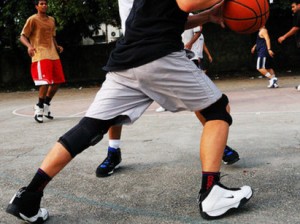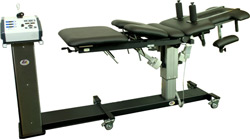 Jumpers knee treatment is just one of many knee injury treatments offered at Diversified Health. Anyone can be a victim of a knee injury; whether you are a professional athlete, a weekend warrior or just doing your day-to-day activities. The knee joint is unique in that it carries body weight at the same time as it provides flexibility and mobility and this construction predisposes the joint to risk of injury from sudden movement and repeated wear and tear.
Jumpers knee treatment is just one of many knee injury treatments offered at Diversified Health. Anyone can be a victim of a knee injury; whether you are a professional athlete, a weekend warrior or just doing your day-to-day activities. The knee joint is unique in that it carries body weight at the same time as it provides flexibility and mobility and this construction predisposes the joint to risk of injury from sudden movement and repeated wear and tear.
What can cause knee injuries:
• Ligament Sprains – Overstretching ligaments are bands of strong tissue that stabilize the knee joint together.
• Cartilage Tears – Pressure from twisting and turning during weight-bearing exercise
• Tendon Strains – This is an overuse injury commonly caused by repeated jumping or “jumpers knee”
• Footwear –ill fitting footwear can affect the way you walk and can place stress on the muscles and tendons around the knee joint.
• Frequency/intensity of activity – Any change such as jogging or playing tennis on a different surface can affect the knee joint.
Treatments for knee pain:
A health care practitioner at Diversified Health Clinic will assess your knee to determine the source of the problem and to develop an individual treatment program. Depending upon the type and degree of injury, the program may include practices such as Acupuncture, Massage Therapy, Chiropractic and Physiotherapy.
Treatments can include manual adjustments, and modalities such as cold laser, shockwave therapy, ultrasound, graston technique or neuro-mechanical adjusting tool.
Returning to activity:
At Diversified Health Clinic we can provide a program to help prevent re-injury as you return to normal activities, including stretching exercises to regain flexibility around the joint and strength training to build up the muscle in the Rehab Gym.
Another element of the rehabilitation program is to retrain balance and coordination. A knee injury involves more than just stress and strain to the soft tissue. It also affects the tiny receptors in the muscles, ligaments and tendons that ‘tell’ you where your knee is positioned. These receptors send signals to correct balance and shift weight.
Whether you require a jumpers knee treatment or a sprain/strain treatment, Diversified Health Clinic will provide you with numerous options that will include exercise programs that will help you strengthen your muscles and get you back participating in the activities you love.








